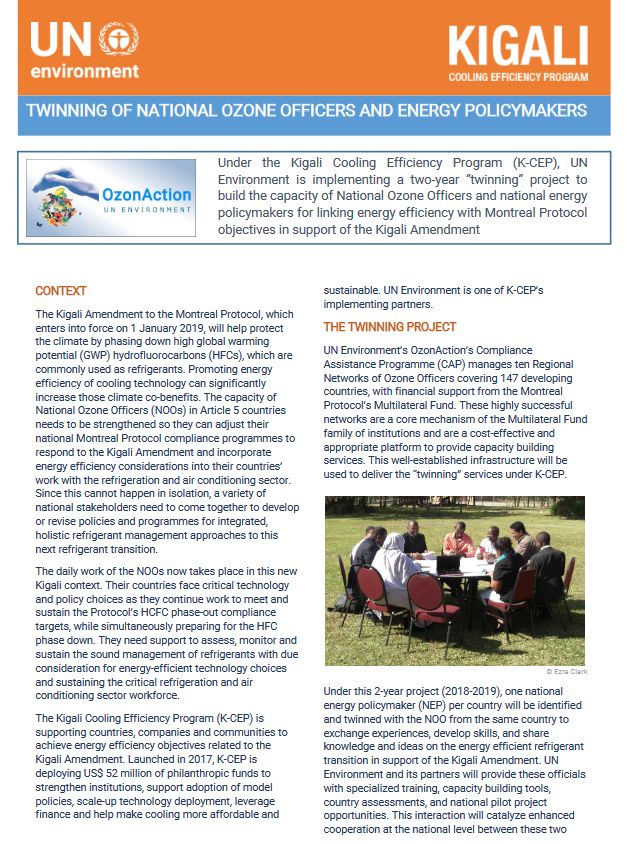Resources
Type: Factsheet
Showing 21 - 40 of 76
76 results found

The WhatGas? UNEP OzonAction application is an information and identification tool for refrigerant gases for ozone-depleting substances(ODS), HFCs, and other alternatives. It is intended to provide a number of stakeholders, including Montreal Protocol National Ozone Officers, Customs Officers, and refrigeration and air-conditioning technicians… read more

World Refrigeration Day (WRD) raises awareness about refrigeration and air-conditioning and their contribution to modern life. WRD is widely supported by industry associations, organizations and societies as well as governments and individuals. It memorializes the birth date(June 26th)of Lord Kelvinforwhom the Absolutetemperature Kelvin Scale… read more

An important Montreal Protocol issue that is currently being discussed and will need to be carefully considered in light of the HCFC phase-out Management Plans (HPMP) second or third stages, which are now being prepared and submitted to the Executive Committee, is that of the HCFC ‘Servicing tail’
To avoid any unforeseen challenges in… read more

iPIC is a voluntary and informal mechanism of information exchange on intended trade between countries in ozone-depleting substances (ODS) and hydrofluorocarbons (HFCs), mixtures containing these as well as products and equipment. It enables countries to share details of eligible importers and exporters with other member countries through a… read more

This document suggests how the recommendation of the World Customs Organization (WCO) on establishing additional digits in the existing 2017 national HS codes to identify specific HFCs could be implemented.

One of the primary ways that countries implement their commitments under the Montreal Protocol and particularly the Kigali Amendment is through the monitoring and control of import and export of controlled substances. This fact sheet provides various options for Article 5 countries on how to deal with seized refrigerants in cases of illegal… read more

One of the important commitments of the Protocol is that of reporting the consumption and production of substances controlled under the Montreal Protocol. Following the ratification of the Kigali Amendment, this commitment is now extended to HFCs. This short factsheet provides some useful information on relevant Article 7 reporting dates and… read more

Until the World Customs Organisation’s Harmonized Commodity Description and Coding System, or Harmonized System (HS) is revised in 2022, all HS codes for hydrofluorocarbons (HFCs) are contained in a single HS code which does not allow differentiation of the individual chemicals or of mixtures/blends. This document outlines a proactive interim… read more

Over the last three decades, the world has realized that the safest and efficient fluorinated refrigerants that were used for decades, contribute negatively to global warming and ozone depletion and threaten life on earth. Because of this, governments and industry engaged in legal and research efforts to find alternatives in order to control… read more

The OzonAction Branch of the Law Division has been strengthening the capacity of governments – particularly the operational focal points for the Montreal Protocol, known as National Ozone Units – as well as industry, customs and enforcement agencies in developing countries to elaborate and enforce the policies required to implement the Protocol… read more

Under the Kigali Cooling Efficiency Program (K-CEP), UN Environment is implementing a two-year "twinning" project to build the capacity of National Ozone Officers and national energy policymakers for linking energy efficiency and Montreal Protocol objectives in support of the Kigali Amendment.

In the Kigali Amendment the Protocol was extended to control the production and consumption of HFCs. These are not ODS, but they are very powerful greenhouse gases (GHGs). This Fact Sheet provides details of which substances are controlled under the Montreal Protocol and gives examples of related substances that are not included in these… read more

Many of the commonly used refrigerants are mixtures of several pure fluids. The Kigali Amendment controls the use of HFCs, including those used in refrigerant mixtures. This Fact Sheet provides details about the GWP of refrigerant mixtures.
La plupart des réfrigérants couramment utilisés sont des mélanges de plusieurs… read more

Mobile air-conditioning (MAC) systems used to cool the driver and passengers in land transport including cars, vans, lorries, buses, agricultural vehicles and trains. Historically all car air-conditioning used the refrigerant CFC-12. This was completely phased-out during the 1990s in developing countries and around a decade later in developing… read more

The most widely used fire protection systems (FPS) involve water based systems such as automatic sprinklers. An important category of FPS are chemical agents that can quickly extinguish a fire without creating some of the consequential damage that is created by water-based FPS. Historically, the most important chemical agents were halons which… read more

In Kigali Fact Sheet 6 the development of a national HFC phase-down strategy is discussed. That Fact Sheet gives background information on the “core actions” that can be used to deliver the required cuts in HFC consumption. It was stressed that the most important long-term core action is to use lower GWP alternatives to HFCs in all new… read more

Following the adoption of the Kigali Amendment to the Montreal Protocol on Substances that Deplete the Ozone Layer, UN Environment's OzonAction prepared a series of fact sheets describing the immediate and future challenges to be addressed by the different Parties between now and until the amendment comes into force.

An overview of lower GWP alternatives and how these are being introduced into the different market sectors and sub-sectors.

This fact sheet shows the four country groupings under the Kigali Amendment and provides a summary of the timetables and explains how to calculate the HFC baseline.

This fact sheet provides a summary of what Parties need to do when introducing new national legislation and setting up appropriate administrative procedures with regard to the implementation of the Kigali Amendment.
Showing 21 - 40 of 76





